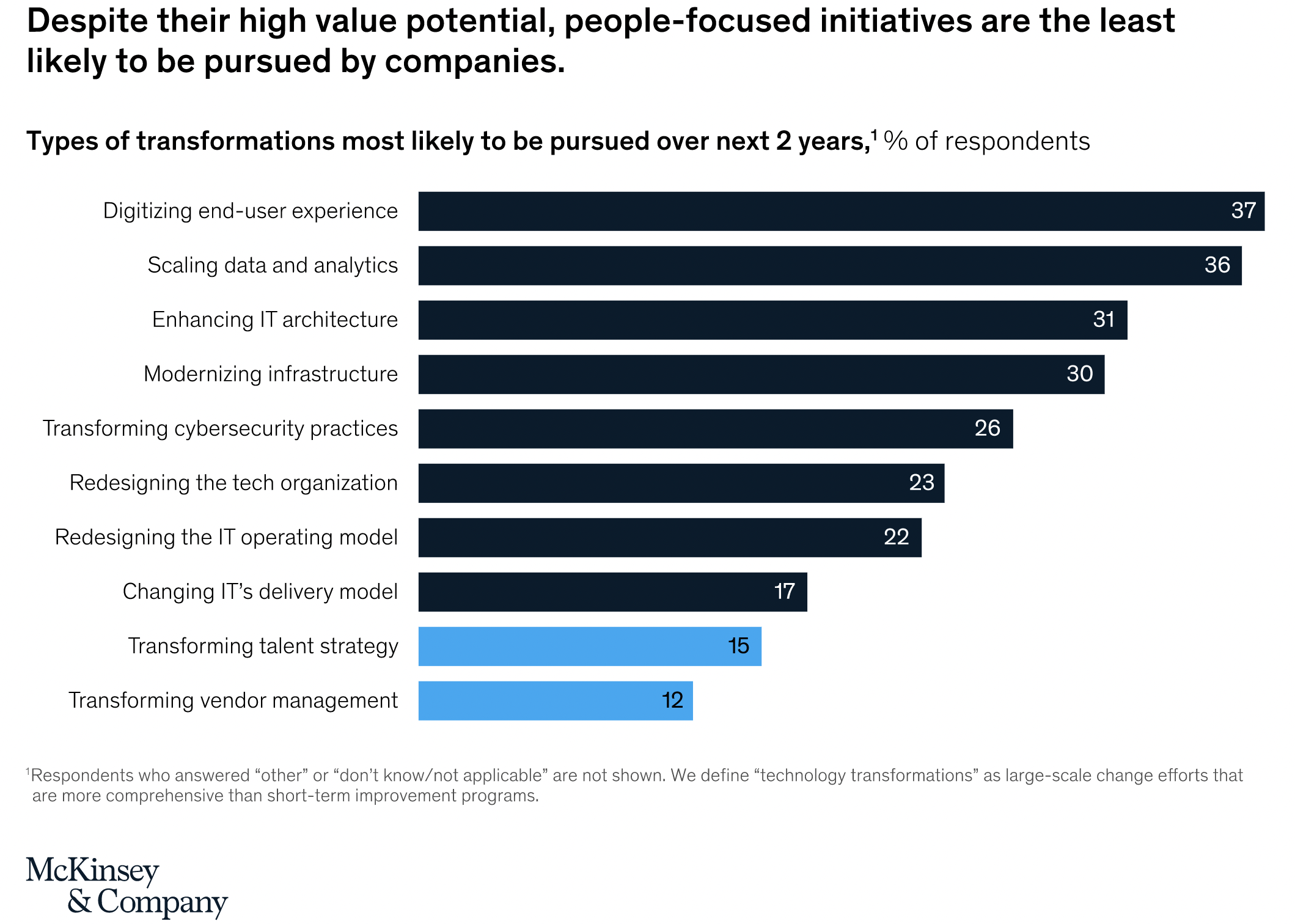Despite being the largest group in the workforce, 2.7 billion in 20181, “deskless workers” seem to be overlooked by the sweeping digital transformation at their workplaces. As we are slowly going back to work in a business-as-unusual world, this is the perfect opportunity for organisations to address this once-forgotten issue.

You are probably reading this article on a laptop while sitting at your desk or via your smartphone while chilling at the coffee table. You manage your daily tasks using productivity tools like Microsoft Planner, Slack, or Monday.com. You regularly conduct virtual meetings via Zoom, WebEx, or Microsoft Teams with clients and team members who live in different time zones.
How convenient! There are thousands upon thousands of applications to aid every activity that we, white collars, do on a regular basis. Literally anything you can think of, there may be an app for it.
However, we are the minority. 80 per cent of the global workforce is deskless, meaning they do not carry out the work while sitting at a desk. And sadly, the solutions that we use practically every day do not cater to the majority of employees out there.
Read more: Your ultimate guide to building a virtual workplace
The state of deskless workers and technology
Billions of deskless workers are still wrapped up in manual, paper-based processes or outdated, clunky software solutions. What industries do these deskless employees work in, you may ask? According to the Emergence 2018 study1 on the deskless workforce, these industries are:
- Agriculture with 858 million workers
- Retail 497 million
- Manufacturing 427 million
- Construction 265 million
- Education 226 million
- Transportation and logistics 189 million
- Healthcare 148 million
- Restaurants and hospitality 122 million
It is not that deskless workers resist advanced technologies. As a matter of fact, they are growing increasingly reliant on it, acknowledging modern solutions help them to be better at their jobs. When asked how technology would help, 70% of deskless workers2 believe communications, operations and logistics, onboarding, and training are areas that can be improved.
Read more: Digital transformation in a business-as-unusual COVID-19 world
Fortunately, employers are beginning to realise the immense benefits brought about by new computing platforms, phones, tablets, wearable tech, and drones. New solutions are being designed to be powerful yet nimble and portable enough to accommodate deskless workers in their day-to-day activities and environments.
Spending on deskless technology is starting to pick up fast. Also stated in the Emergence study, Transportation and Manufacturing are the two leading industries that plan to increase spending the most on deskless tech.
Nevertheless, investments in empowering the human workforce to leverage the power of technology, though gaining momentum, is still insufficient.
Deskless workers need deskless solutions
The current global health pandemic has accelerated various digital transformation initiatives, including companies with large deskless workforces. However, results from the same Emergence study still report that 65% of deskless workers have not been equipped with additional technology to complete their jobs.
Deskless workers are reportedly unsatisfied with or believe there is room for improvement in the provided technology. The dissatisfaction rates are high, particularly in industries like construction, education, healthcare, manufacturing, and retail. The reason being they are given inadequate, less-than-ideal solutions and deskbound devices (e.g., PCs and laptops) despite not working at a desk.
This is alarming considering the workloads of frontline workers in essential industries are ever-increasing since the pandemic.
Read more: The often overlooked aspect of digital transformation culture changes
Many workers believe limited budgets and a lack of awareness among managers are causes for not having adequate hardware and software to accommodate the increasing market, customers, and workers demands.
Only 1% of software venture funding is putting towards solutions serving this special group of the workforce1. Plus, buying decisions are imposed from the top down, forgoing the true needs of the actual end-users. This adds more frustration to the already incredibly high level of dissatisfaction among deskless workers.
As a result, frustrated employees seek to resolve issues and fill any gaps by themselves using technologies they have already used in their personal lives or actively seek out purposely built hardware, software, applications from acquaintances, co-workers, or through their own research.
Interestingly, what these deskless workers want is fairly similar to what their deskbound colleagues have been using. For instance, more than 90% of deskless employees want communication tools that can help improve their productivity and processes associated with onboarding/ training and operations/ logistics2.
Preferably, these solutions and other deskless tools should be efficient, mobile optimised, collaborative, and overly simplistic so workers can just pick up and use them without worrying about a piece of tech distracting their work.
The age-old question about the talent gap
Businesses that digitally transformed early have succeeded in differentiating themselves from others, particularly during the COVID-19 pandemic. These companies have been creating value, adopting new technologies, and bringing technology and business closer together.
Additionally, companies that put in the effort to transform their people and talent strategies, focusing on attracting, retaining, and developing talents with digital and engineering skills, are also witnessing a surge in values. Reimagined talent strategies have enabled businesses to create tangible results in realising new revenue streams, increasing revenue from existing streams, reducing costs, and improving employee experience3.
Despite the direct linking between people-centric initiatives and value creation, transforming talent strategies is at the bottom list of priorities in many companies. Instead, digitisation of the end-user experience, scaling of data and analytics, and enhancements of IT architecture are viewed as more critical initiatives to kickstart now.
Read more: How is talent management about to be permanently transformed?

Source: McKinsey & Company3
Only 15 per cent of respondents in a McKinsey’s study3 say their companies plan to pursue a talent-strategy transformation in the next two years.
Businesses are adopting technologies at an unprecedented rate but, at the same time, are neglecting existing skills gaps and other associated issues, such as shifting cultures and ways of working.
The need to address the talent issue is universal. And the talent challenge remains significant regardless of industries and business sizes. During this particular period, companies have to be more agile and resilient more than ever.
The market for vertical-specific solutions is full of potential and opportunities for software developers and software providers to look into. Deskless workers want top-notch, polished, and intuitive apps just like what deskbound employees are blessed to have.
Employers are making an effort in transforming their businesses and employees to face the highly unpredictable environments caused by the recent health pandemic and economic downturns, but much work is needed to fill the existing gaps of what deskless workers want and what is given to them.
Streamlining the process of onboarding new employees and developing existing ones can be done with the help of an appropriate virtual training platform. Ideally, the platform allows your employees to learn and upskill their potential with bite-size, interactive lessons that can be viewed anytime, anywhere.
To help you and your business earn the upper hand in today’s demanding market, our industry-leading experts have been developing a centralised, online resource portal for years, and finally, it is now available to you and the general public.
We call the online training platform TRG Academy. As of 1 September 2021, TRG Academy has published 109 chapters, 832 videos, 907 lessons for Infor SunSystems, Infor OS, Infor d/EPM, Infor Q&A, TEBIS and more Talent Management courses are already lined up. According to our schedule, one new course will be added to the platform every month.
How can TRG Academy benefit you and your teams? Check it out via the button below.
References:
1. http://desklessworkforce2018.com/
2. https://www.emcap.com/technology-for-the-deskless-workforce-2020/
3. https://www.mckinsey.com/business-functions/mckinsey-digital/our-insights/seven-lessons-on-how-technology-transformations-can-deliver-value
 English
English  Vietnamese
Vietnamese 

